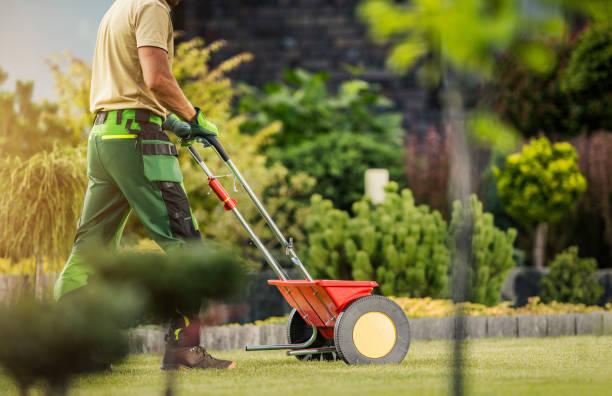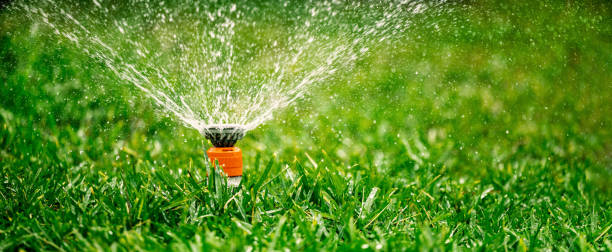In this article, we delve into the critical role of early grass treatments in cultivating a healthy and vibrant lawn. From addressing soil health to proactive weed management, we explore how strategic grass treatments at the beginning of the season set the stage for long-term turf resilience and beauty.
Early grass treatments play a pivotal role in establishing a solid foundation for a lawn’s overall health and vitality throughout the growing season. As spring approaches, the initial steps to nurture the turf set the tone for its long-term resilience and appearance. One of the key benefits of early grass treatments lies in addressing soil health and nutrient deficiencies. Conducting soil tests and applying appropriate fertilizers early in the season ensures that the grass receives essential nutrients for robust growth and development. By promptly addressing soil imbalances and deficiencies, homeowners lay the groundwork for lush, green turf that thrives in the months ahead.

Early grass treatments enable proactive weed management, essential for maintaining the integrity of the lawn. As temperatures rise and daylight hours increase, weed seeds lying dormant in the soil begin germinating and compete with grass for resources. Implementing pre-emergent herbicides in the early spring prevents weed seeds from establishing root systems, effectively reducing weed proliferation and preserving the aesthetic appeal of the lawn. By targeting weeds before they become established, homeowners can mitigate the need for extensive weed control measures later in the season, saving time, effort, and resources.
Grass treatments contribute to the turf’s overall resilience and stress tolerance, particularly in regions with fluctuating weather patterns and environmental stressors. Aerating compacted soil, dethatching accumulated debris, and overseeding sparse areas early in the spring promote robust root development and improve water and nutrient uptake. These practices enhance the lawn’s ability to withstand drought, disease, and foot traffic, ensuring long-lasting health and vitality. By addressing underlying issues and implementing preventive measures early in the season, homeowners set their lawns on a trajectory for success, yielding lush, vibrant turf that enhances the beauty and value of their outdoor spaces.

To achieve the coveted perfect lawn this season, it’s crucial to implement strategic spring grass treatments. From fertilization to weed control, a comprehensive approach ensures healthy, resilient turf that thrives throughout the year.
1) Soil Testing and Analysis:
Before initiating any treatments, conducting a soil test is imperative. Soil testing helps identify deficiencies in nutrients and pH levels, providing valuable insights for tailored fertilization and amendment strategies. Local agricultural extension offices or garden centers often offer soil testing services, enabling homeowners to make informed decisions about their lawn care regimen.
2) Fertilization:
Spring is critical to fertilize the lawn, as it kickstarts growth and promotes lush, green grass. Opt for a slow-release, balanced fertilizer formulated explicitly for spring application. These fertilizers typically contain nitrogen, phosphorus, and potassium in proportions suitable for the season’s needs. Follow manufacturer instructions carefully to avoid over-application, which can lead to nutrient runoff and environmental harm.

3) Aeration:
Over time, soil compaction restricts root growth and inhibits nutrient absorption, resulting in lackluster turf. Aeration involves perforating the soil with small holes to alleviate compaction and enhance air, water, and nutrient circulation. Spring is ideal for aerating cool-season grasses like Kentucky bluegrass and fescue, promoting robust root development and overall turf health.
4) Dethatching:
Thatch, a layer of dead grass, roots, and organic debris that accumulates between the soil and green vegetation, impedes water infiltration and nutrient absorption. Spring dethatching removes excessive thatch buildup, allowing air and water to penetrate the soil more effectively. Utilize specialized dethatching equipment or manual raking techniques to gently lift and remove debris without damaging the underlying turf.
5) Weed Control:
Spring heralds the emergence of weeds vying for space in the lawn. Implement pre-emergent herbicides early in the season to prevent weed seeds from germinating and establishing root systems. Post-emergent herbicides target existing weeds, effectively eliminating unsightly intruders and preserving the integrity of the turf. Selective herbicides target specific weed species while minimizing harm to desirable grass varieties.
6) Mowing and Watering Practices:
Proper mowing and watering techniques are fundamental to maintaining a healthy lawn. Adjust mower blades to the appropriate height for optimal grass health, typically around 2.5 to 3 inches for most cool-season grasses. Avoid mowing more than one-third of the grass blade length at a time to prevent stress and scalping. Additionally, adhere to a consistent watering schedule, providing deep, infrequent irrigation to encourage profound root growth and drought tolerance.

7) Overseeding:
Overseeding introduces new grass seed varieties to existing turf, enhancing density and filling sparse areas. Spring overseeding capitalizes on favorable soil temperatures and adequate moisture, facilitating rapid germination and establishment of new grass seedlings. Choose high-quality seed blends compatible with existing grass species to promote uniform coverage and vibrant coloration.
In conclusion, achieving a perfect lawn requires diligent attention to detail and a proactive approach to spring grass treatments. By prioritizing soil health, nutrient management, weed control, and proper maintenance practices, homeowners can cultivate a lush, resilient lawn that serves as the envy of the neighborhood. With dedication and care, the rewards of a verdant, thriving lawn endure season after season, providing a picturesque backdrop for outdoor enjoyment and relaxation.
